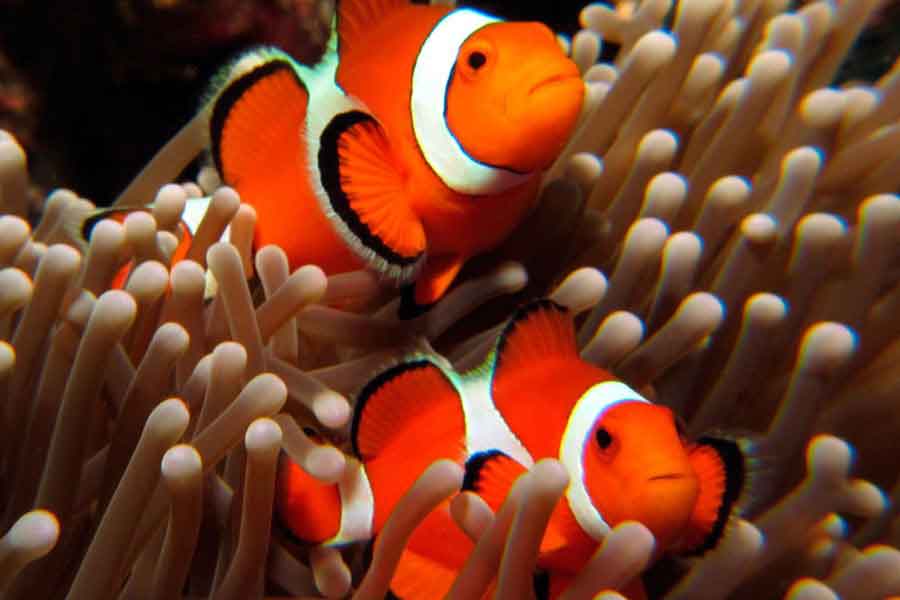
All fish strive to ensure the survival of their offspring, and the first rule for securing the continuity of the species is to have one male and one female sharing the same territory. The ability of some fish to change sex promotes and ensures this continuity.
Clownfish start their lives as males. The larvae travel freely in the plankton until they find an anemone to settle in. In a short time, the largest among the new residents will become a female and grow to a size two or three times larger than the remaining males.
The males fertilize the eggs laid by the new female, while she continuously harasses the males to prevent them from developing and becoming new females. Apparently, this behavior affects the hormones of the males, preventing them from changing sex. It is also likely that sex change is linked to the size of the fish and that, in a hostile and stressful environment, they do not feed enough to reach the desired size.
If the female dies or abandons the anemone, the largest male will immediately take her place. Hermaphroditism makes a lot of sense in the ocean, where all fish are constantly exposed to predation. If the female dies and only males are left, there would be no possibility of reproduction. However, by being able to transform, the survival of just two individuals would guarantee offspring.
On the other hand, if the «traveling larvae» reach an anemone that already has an established population of clownfish, the female will decide whether to accept the new males or not, and she will force them to remain as males.
As humans, we like to attribute human behaviors to animals. So, when we dive and see an anemone surrounded by clownfish, we like to think of it as a mother and her offspring. But the reality is that it’s a harem of fearful males, subordinated by a dominant female. All for the sake of preserving the species, all to contribute to the game of life.
«You cannot defend what you do not love, and you cannot love what you do not know.»

